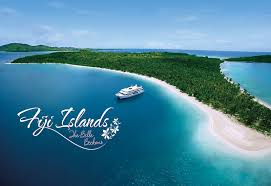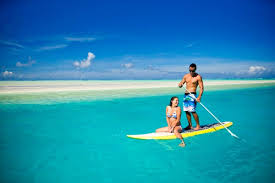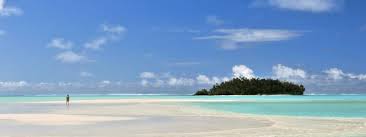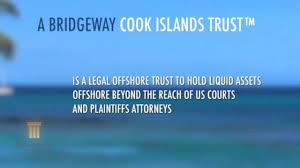
Vava’u, Tonga:
I am jotting this down in the midst of our annual family vacation. On this trip, as I have for twenty-six of the past twenty-eight years, I am being accompanied by more than 30 clients.
This one should be easy. We’re sailing the Paul Gauguin on a rather incredible itinerary from Fiji to Tonga and the Cook Islands, heading northeast to the Society Islands on a 12-night journey.
As sometimes happens, one of the trip highlights occurred before I ever boarded our ten a half hour Fiji Airways flight to Nadi. After two-stopping from our home in Florida we arranged to spend the night at the Ritz Carlton Marina Del Ray in Los Angeles. This is a low-rise hotel that looks out over the Pacific on one side and the huge yacht harbor on the other. It was the perfect break before doing the long haul flight the next day.
My wife, daughter, and I were walking along the path that lined the boat docks at the rear of the property on a perfect LA day. My daughter was dribbling her basketball as she finds walking without purpose boring. An older gentleman was heading our way and as he approached he began speaking to my ten year-old explaining that he was a much better dribbler and he was certain he could run circles around her on the court. Since he was at least ninety, she doubted that, but they hit it off and we were all taken by his sparkling blue eyes, his warmth, and intelligent energy.
We stood there talking a bit about our lives and he mentioned, modestly, that he was the partner of someone named George Martin. He talked about his family of immigrants and we realized that we came from very similar backgrounds. He barely whispered that he had written a book about his family but he couldn’t quite remember the exact title. “It’s got the word radish in it”, he told us. I ordered it that night from Amazon so it would be waiting on my return.
This stranger was beguiling, as those you meet along the road often are. I knew that whatever we might experience in the South Seas, this chance encounter was a wonderful beginning. He invited us to come home with him to meet his wife but we had to decline. So we talked some more about his “extraordinary” family, the poverty they endured, and their struggles in the new world. Finally, he looked at us, one by one, and said “You know I really like your family so let me tell you the most important thing my father ever taught me.”
He explained that as a kid about my daughter’s age, living in a tenement, with few prospects, his father sat him down one day and said he wanted to teach him something he should remember for the rest of his life.
“Always be the first one in the family to use the toilet in the morning, his father said. “Otherwise you’ll have to wait in a long line. And when you enter the toilet, look for a few moments at yourself in the mirror. And while you are looking, laugh as loudly as you can. If you start each day laughing at yourself you’ll never take yourself too seriously and you’ll be happy.”
Later that day I Googled his name back in our room. He has written six books. The George Martin who was his partner was indeed Sir George Martin who had produced the Beatles. He went on to start his own sound and film studios and he produced several films. I’ve laughed in the mirror every day since I met him. I highly recommend it.
The next day before boarding our Fiji Airways flight, I took a long walk through the terminal to get a sense of the place. Parked right next door to our aircraft was the Air New Zealand flight for Auckland. I also saw the Virgin Australia plane loading up, along with Qantas flight that had just pulled in to the gate. What was interesting is that they were all using the same equipment, an Airbus 330, a long-distance workhorse that features two engines. As I walked past these identical aircraft all lined up for a flight of ten hours or more, I thought about how easily the public has accepted the notion of fly long ocean routes on a two-engine aircraft when four-engine alternatives like the Airbus 340 are available.
We landed in Nadi, the commercial center and a place the brochure photographers wisely overlook. The population of Fiji is just under a million and they are fairly well spread out. Although there are literally thousands of tiny islands in the archipelago, about 320 are thought to be large enough to support human habitation and the necessary cropland required for survival. Fijians have populated only 111 of these islands.
We have this notion of south seas paradise when we think of Fiji and it is certainly there. You can find your palm-fringed beaches and a wide variety of resorts that cater, primarily, to the Aussie market which is only 1300 miles to the east. I had been told that I would most enjoy meeting the Fijians, a genuinely friendly people who always seemed to appreciate the fact that we came from America, at considerable effort and expense. Very few of the people I met on Fiji had ever been to the States and only one person I spoke to had any relatives there.

Life in the islands has not always been calm and, even now, there are undercurrents of political unrest. Since the mid-eighties there have been three political coups in Fiji, largely brought about by conflicts involving ethnic Fijians and the descendants of laborers from India who comprise a significant portion of the population.
Perhaps attracted by the calm winds and incredible beaches, missionaries of all stripes have targeted Fiji over the years for their brand of religious devotion. The Methodists seem to have won – for the moment, although there are significant numbers of Hindus and Muslims.
The missionaries have had their work cut out for them as the “peaceful Fijians” practiced cannibalism and tribal torture as recently as two hundred years ago.
Nowadays, were I return to Fiji, I would be tempted to stay at the beautifully situated Cousteau Family Resort. It is nestled in a gorgeous setting along the edge of Savusavu Bay. Think perfect family resort for families who swim, snorkel, and scuba.
The untold story of Fiji, I suppose, is that more than a quarter of a million of its residents live in poverty. The population is spread out enough to make delivery of education, health care, and the most basic human services tough for any government to deliver.
Many Fijians live the “Kaiviti way”, a subsistence village lifestyle that centers on tribal family led by a village chief and supported by ideals that literally translate into food, shelter, and friendship for everyone.
The next day, we decided to set out for one of those villages mindful of the way we dressed for the visit. Fiji is trying to ban public floggings, a practice that hails from colonial days under the British and currently used to punish young girls for wearing shorts. Schoolgirls are also lined up in some villages if the elders feel their locks are too long for a “village haircut.”
One village chief summed up his feelings about the practice in an interview with the Fiji Sun by saying these practices will help communities keep order “but in a controlled manner.”
Sometimes paradise has an inner core and it isn’t always pretty.
A LETTER FROM PERCEIVED PARADISES
Part Two of a Two-Part Series

Fiji, Tonga, and the Cook Islands were personal bucket list destinations before I could really afford a bucket. Any place located in the South Seas seems to awaken my curiosity about what life must really be like in Paradise. Surely, there are places on this earth where the scenery is as spectacular as we imagine it might be and the people live in total; harmony with their surroundings.
I have found a few places like that in my life, and for that I am grateful. Iceland and New Zealand come to mind. But now, I am seeing Tonga and the Cook Islands after spending time in Fiji with a group of client/friends sailing the Paul Gauguin en route to Papeete.
My arrival in Vava’u was historically significant in that this last of the Polynesian monarchies, had recently elected its first non-noble Prime Minister. Preceding this event, the first democratically elected parliament came to power in 2010, ending 165 years of feudal rule.
I went out by boat to see Swallows Cave and its hidden sister, Mariner’s Cave. Set in the midst of crystal clear waters, these caves are set in an outcrop of porous limestone. You swim in the entrance to the cave from your boat and immediately feel that you have entered the world’s largest pair of tonsils. It is heaven for snorkelers but the real treat is getting to Mariner’s Cave whose entrance is hidden underneath the water. The adventurous swim around for some time trying to find the hidden entrance until discovering that there are two arrows sprayed in pink on the limestone pointing down to a snorkeler’s dream. Slowly, you enter the underwater cave that looks like a cathedral made of grey glass.
Poking around Tonga and speaking to locals was a bit challenging. This is a surprisingly conservative, Christian country that was, like so many other near-paradise nations, a former British Protectorate.
Tonga is really a collection of 170 islands and people live, primarily with their “tribesmen” on 36 of these small slivers of sand in a tranquil sea. They have access to few government services of any kind. But Tongans, like so many of the people I encountered on this trip are proud to point out that they are “pretty much all of us farmers”. There is really little need for food to be brought in. This fact, together with the highly desirable weather, seems to create a sense of place.
Tongans move around as work is unavailable to much of the population. There are far more Tongans living in New Zealand at the moment then there are in the islands.
One senses a bit of hope related to tourism. There are no luxury accommodations and tourism is limited to those who know that these islands are some of the finest snorkeling and diving environments on earth.
Many of the locals I spoke with were surprised to know we were American, some assumed we were unusually quiet Aussies. It is difficult for an American to get here and one here, accommodations are sparse.
One young man I spoke with was working a fishing boat in the nearly perfect deep water surrounding Vava’u Island. I had asked him many questions as he was articulate and spoke excellent English. After a while, I looked at him and said “You know I’ve asked you a lot of questions about your country, do you want to ask me any questions about my country?”
“Is America really the strongest country of all countries?”, he asked me.
I tried to explain that we were in some ways, perhaps not in others. “So what will you do with your strength?” He asked.
I couldn’t say for sure but will never forget the question or where it was asked – we were standing on a boat in the middle of a perfect sea with patches of uninhabited islands off in the distance.
The next spot on my itinerary was the most surprising. It had a beauty I will never forget and I have been dreading the challenge of trying to describe it to you in mere words.
We dropped anchor near the port of Aitutaki, an island in the Cook Islands group just north of Rarotonga.
In the 1950’s, the lagoon at Aitutaki was a stopover for guests flying the famed Coral Route on the flying boats of Tasman Empire Airways. Guests had about two hours to relax before taking off again.
I had more than two hours and I was going to make the most of it. I headed out to the lagoon, believed to be one of the most beautiful in the world. It has been called the “Bora Bora of the Cooks” but I’m not sure that the writer who coined that phrase has actually visited either. Where Bora Bora is largely dependent on five-star resort tourism, people come to Aikutaki in the Cook Islands for two other reasons.
The first is, of course, the incredible beauty. Imagine this: You are sailing the bluest, clearest waters you have ever seen with tree-shaded, uninhabited islands off in the distance in every direction. The water is so deep that the ships anchor cannot reach bottom.
As my small speedboat skims the water we slow as the water ahead suddenly turns a perfect turquoise.
Our boat slides from the deep blue to the turquoise water and stops in the middle of the translucent water. The small step ladder on the back of the boat is lowered and we exit to snorkel. But the water is waist-high. We are on a beautiful sand bar. If I walk a dozen steps to my left or right, the blue sea begins again and there is a sudden drop hundreds of feet deep. I am snorkeling in water on the edge of a water cliff.
Later that afternoon, we are spending back across the deep blue sea when, in the middle of nothingness, I see, perhaps a dozen humans walking across the ocean. They are walking a turquoise road that ends, ahead in the distance, at a perfectly circular spit of sand with just a few swaying palm trees.
That is the singular vision I have of the Cook Islands and the reason, on its own, to justify further tourist interest in this part of the world.
But I did tell you that there were two reasons for people to come to this lovely but inaccessible part of the world. The second reason is less well known but I happened to be sharing a boat with someone who was here for that very reason, an attorney who manages off-shore trusts for his clients.
Paradise as the Cook Islands might define it, is a place where sincerely wealthy people can open an “Asset Protection Trust.” The Cooks have some of the most protected trust laws on the books and every trust must be set up by a foreigner. It has been described as one of the world’s largest safety deposit boxes.

Are you the FBI in search of a fugitive’s funds rather than a vacation? You can try to seize the assets but every case must be litigated in Cook’s courts under Cook Island law, law that was expressly written to shield the trust beneficiaries.
The coral atolls that form the Cook Islands have nothing much to sell beyond their sparse tourism and fishing. There are a growing number of private trusts and banks on the island to service them. Some refer to the Cook Islands as a “sunny place for shay people.”
But for me, my vision of paradise will always be a dozen people walking across the middle of a perfect sea.

